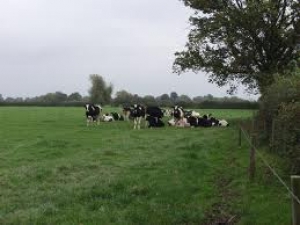Technical Support

Three key areas of potential have been identified including:
- Developing new pasture plant varieties that can use phosphorus better, or grow better, in lower-phosphorus soils.
- Exploring new fertiliser technologies that minimise the reactions of phosphorus with soil so that plants can access it quicker.
- Applying the right amounts of phosphorus fertilisers at the right time and in the right place.
The review, conducted by CSIRO and MLA along with leading international scientists, also demonstrated that a better understanding of how soil and microbes react with phosphorus is needed to help develop better ways to manage soil phosphorus fertility.
Globally, phosphorus fertilisers are a critical input for producing food. For every kilogram of phosphorus that ends up in farm products, usually two to four kilograms of phosphorus (in fertiliser) has been added to the soil. Australian soils tend to hold onto phosphorus (P) when they are fertilised and transform it into forms that plants can't easily access. Pasture systems were found to have low P-use efficiency in the range of 15-30 per cent.
For most Australian properties, using phosphorus fertiliser (along with other inputs like nitrogen and water) ensures high production per hectare - helping to minimise overhead costs and support efficient use of resources.
Rising fertiliser costs have become a major disincentive for phosphorus fertiliser use by livestock producers and this threatens to reduce productivity gains and higher net farm incomes that have been achieved through higher stocking rates.
According to Dr Richard Simpson from CSIRO's Sustainable Agriculture Flagship, improvements in using phosphorus efficiently in Australia had stalled for many years.
"Unfortunately, we really can't afford to be using phosphorus inefficiently. From a dollar point of view, improved efficiency will mean we can reduce costs for our farmers, but also, high-quality phosphorus reserves are a finite global resource, the more effectively we use phosphorus the better global citizens we will be, and the smaller the environmental foot print of the grazing industries.
"The key thing for farmers to think about currently is whether their rates of phosphorus fertiliser application are optimised for their production goals. Applying phosphorus amounts that exceed the targets for optimal management simply cost more in fertiliser for no gain," Dr Simpson said.
The research highlights that for continued improvements into the future, the grazing industry needs to research the development of novel, lower P-farming systems that can provide measurable improvements in P-efficiency.





















